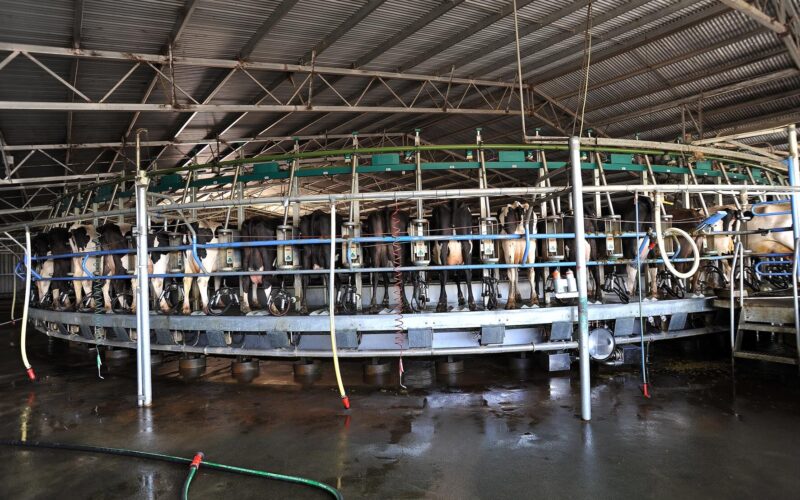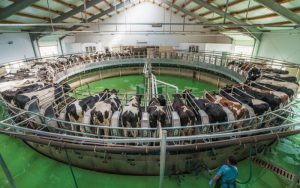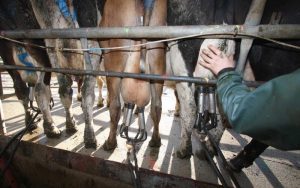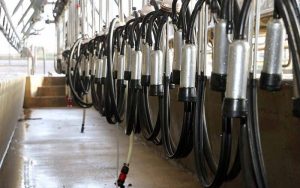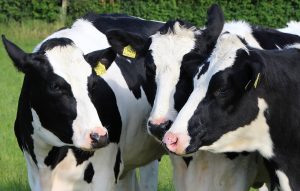
OECD-FAO Agricultural Outlook pegs NZ dairy growth at just 0.5% a year thanks to land and environmental restrictions.
New Zealand’s milk production is expected to grow at 0.5% a year over the next decade as it is increasingly constrained by land and environmental restrictions, the OECD-FAO Agricultural Outlook for 2024-2033 says.
While New Zealand’s share of global milk production is only 2.5%, it is the most export-oriented country and after expanding milk production strongly over the past 20 years, milk output growth has stalled in recent years and will continue to do so, it says.
Released on July 2, the Outlook provides a consensus assessment of the 10-year prospects for agricultural commodity and fish markets.
“The European Union, New Zealand and the United States are expected to remain the top exporters of processed dairy products and are projected to jointly account for nearly 70% of total exports.
“New Zealand is the leading exporter of butter and WMP, while the EU is the main exporter of cheese. Since 2021, the US has surpassed the EU as the world’s dominant exporter of skim milk powder (SMP) and this trend is expected to continue over the medium term.”
World milk production is projected to grow at 1.6% a year over the next decade, faster than most other important agricultural commodities. India is expected to remain the world’s largest producer of milk with continued strong production growth expected.
China is projected to remain the world’s largest importer of milk products. However, though it is also the world’s largest WMP importer, it is anticipated to import less in response to the buildup of domestic stocks.
Population growth and an expanding middle class will also see demand increase in southeast Asia and Africa.
Major dairy exporters will continue to face several economic and environmental challenges over the next decade, the report says.
While the growth of plant-based replacements is strong in certain regions, there are conflicting views regarding their environmental impact and health benefits, which leads to uncertainties about their long-term impact on dairy demand.
“Nevertheless, per-capita consumption of fresh dairy products is expected to decline in Europe, Oceania and North America, partly displaced by an increasing consumption of plant-based alternatives.”
The Outlook says the introduction of sustainable production policies and growing consumer concerns about the health implication of dairy products will affect the projections for the dairy sector.
It also speculates that India could integrate itself into the global dairy market, which would have a strong impact.
“This seems more and more plausible as some Indian dairy companies are actively exploring the prospects of exporting to neighbouring countries.”
Environmental legislation could also have a strong impact on the future development of dairy production but it could also lead to innovative solutions that improve the long-term competitiveness of the sector.
“Overall, the global level of GHG emissions will largely depend on efficiency gains in India and other countries with high cattle populations and extensive production. In addition, climate change and extreme weather events, already experienced in some countries and regions, could aggravate the viability of milk production in the affected countries,” it says.
The Outlook says India and southeast Asia’s growing urban population and affluence should see them overtake China’s influence in driving global food and agricultural consumption in the next decade.
“India and southeast Asian countries are expected to account for 31% of global consumption growth by 2033, driven by their growing urban population and increasing affluence.”
Agriculture’s global greenhouse gas emissions intensity is expected to decline, as growth will be based on productivity improvements rather than cultivated land and livestock herd expansions, although direct emissions from agriculture will still increase by 5%.
In per capita terms, GHG emissions in low-income countries will remain below those of high-income countries.
The Outlook says halving food loss and waste has the potential to reduce global agricultural GHG emissions by 4% and the number of undernourished people by 153 million by the year 2030.
It predicts a slight fall in real international reference prices for main agricultural commodities over the next 10 years, but this may not be reflected in local retail food prices.
This is due to domestic inflation and currency devaluation as well as high domestic logistics and processing costs sustaining or widening the wedge between international commodity and retail food prices.
“Such exacerbating local conditions may pose challenges to livelihoods and threaten the food security of vulnerable consumers.”
You can now read the most important #news on #eDairyNews #Whatsapp channels!!!
🇺🇸 eDairy News INGLÊS: https://whatsapp.com/channel/0029VaKsjzGDTkJyIN6hcP1K
